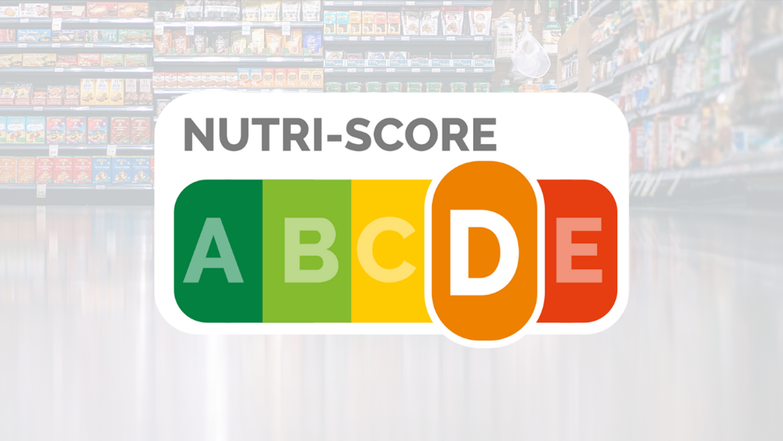The Nutri-Score update tackles several of the weaknesses of the traffic light label. But there is still space for further improvement, especially when it comes to the assessment of sugar.
The Nutri-Score will be updated: The international Scientific Committee (ScC) of the Nutri-Score has delivered a first report recommending changes to the algorithm of the nutrition label. This first revision tackles several of the weaknesses of the Nutri-Score. The Nutri-Scores Steering Committee unanimously approved these changes, which will therefore be incorporated into the new version of the front-of-pack traffic light label. foodwatch thinks the revision is a step into the right direction, but there is still space for further improvement.
The Scientific Committee , who was in charge of improving the Nutri-Score, has proposed adjustments to the Nutri-Score algorithm in a 135 pages long report. The committee judged that the Nutri-Score algorithm generally worked well already, but still needed adjustments in order to better differentiate between favourable and less favourable foods.
The revision includes the following changes:
- A stricter assessment of foods that are high in sugar and salt;
- A better classification of (fatty) fish without added nutrients (like oil or salt);
- An improvement for vegetable oils: in general, vegetable oils are improved by one class of the Nutri-Score. Vegetable oils with low levels of saturated fatty acids (rapeseed, walnut, oleic sunflower oil) can reach the B classification, as does olive oil. Sunflower oil is shifted to the C category;
- A better discrimination for nuts and seeds without added salt or sugar, which are mostly classified in A or B, while salted and/or sweetened versions are on average in C or even D;
- Better distinction between whole grain products that are (naturally) rich in fibre and processed/refined foods with relatively little fibre (whole grain vs white bread).
With these adjustments, the proportion of green A's and B's will decrease in food products like frozen pizza, breakfast cereals, sweet bakery products and ready-to-eat meals.
Sugar needs to be assessed even more strictly
The new algorithm assesses sugar more strictly. This is good, but it still does not reflect the latest scientific consensus. The reference value of 90 grams is still clearly too high. A report by the European Food Safety Authority (EFSA) published in February 2022 shows that even small amounts of sugar can be harmful to health. The expert panel found that “no safe upper limit for free sugars can be established”. According to EFSA, the intake of added and free sugars should be as low as possible. The risk of numerous health problems, such as type 2 diabetes or cardiovascular disease, increases with increasing sugar consumption, it said.
"Free sugars" are refined sugars added to foods and drinks, plus those naturally present in honey and syrups, as well as in fruit and vegetable juices and concentrates. "Total sugars" are all sugars present in the diet, including those naturally present in fruit, vegetables, and milk.
The sugar-weakness of the Nutri-Score comes back to the Food Information to Consumers Regulation (FIC) that includes a reference value for total sugars of 90 grams per adult per day. On the contrary, the World Health Organization (WHO) advises a maximum of 10% of daily calorie intake in the form of free sugars. This translates - depending on country, age, sex and dietary guidelines on daily calorie intake - to roughly 50 grams of sugar per day. The problem according to the Scientific Comittee: The FIC regulation provides the only available internationally acknowledged reference value for total sugars. The Nutri-Score is based on the mandatory nutritional information on the back-of-pack, which - among other nutrients - only provides information on the content of total sugars. The Nutri-Score in its current version is therefore not able to differentiate between free, added or naturally occurring sugars in its algorithm.
The ScC stresses in its report: “The ScC acknowledges that including free or added sugars instead of total sugars in the algorithm would be quite relevant from a scientific perspective but believes that a change in the FIC regulation is firstly required.” This is a call from scientists to change EU legislation. foodwatch urges the European Commission and the European Parliament to change this legislation urgently.
The revision of the Nutri-Score is still not complete - the revision for the categories of 'Beverages' (announced for the end of 2022) and 'Fruit, Vegetables and Nuts' (announced in 2023) are still to come.
Nutri-Score needs to be made mandatory in EU
The Nutri-Score is the most consumer-friendly nutrition labeling model. It has been proven to encourage people to choose healthier products. The Nutri-Score can only develop its full potential if consumers can compare all products at a glance when shopping.
The European Commission will publish a proposal for a European nutrition label by the end of 2022. foodwatch urges the Commission to choose the Nutri-Score as nutrition label for all EU countries. Setting up a totally new label would take endless time again and that would be a victory for the food industry that opposes the introduction of a mandatory, science-based, consumer-friendly nutrition label. Nutri-Score is already the designated label for six EU-member states and Switzerland (BE, DE, ES, FR, LU, NL + CH).
